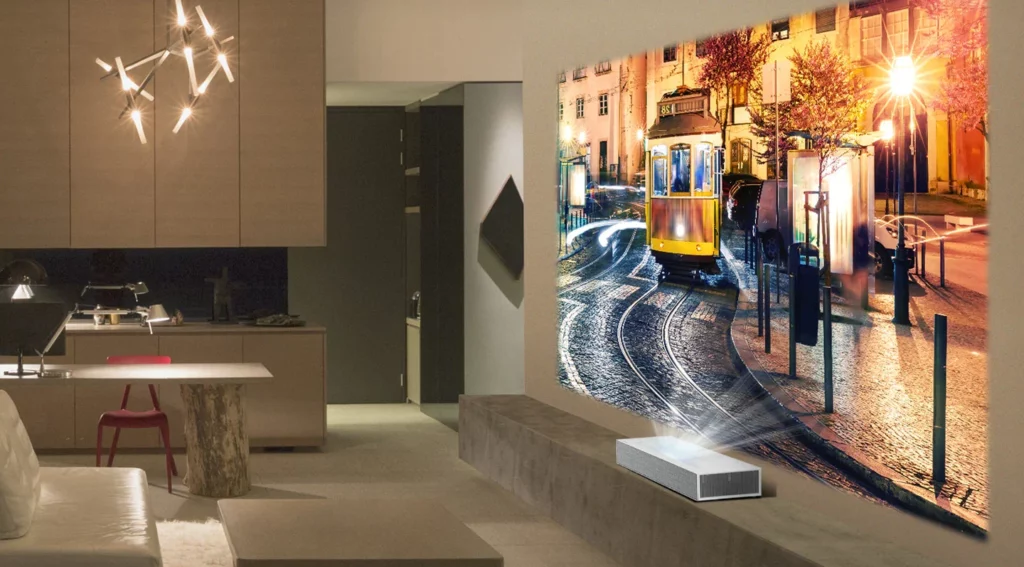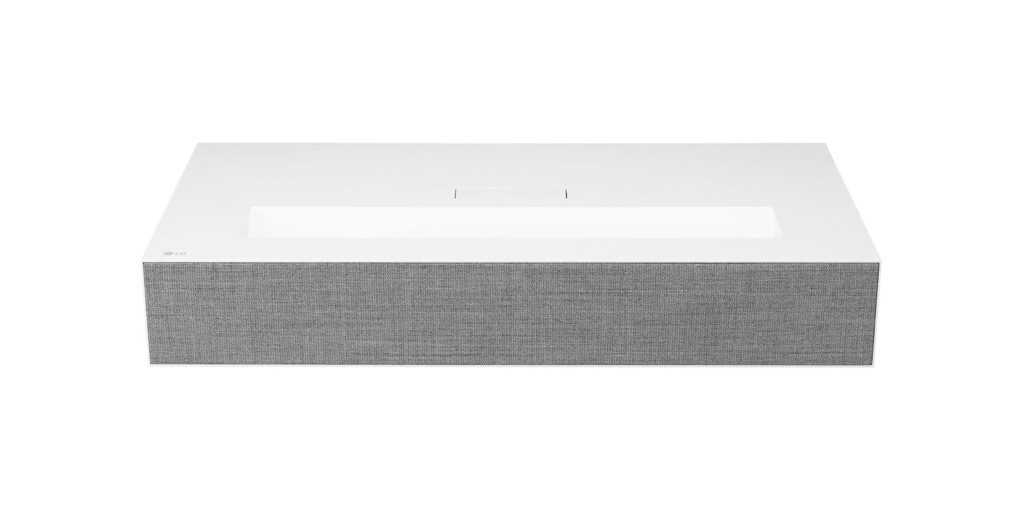Today we look at the first of the major electronics conglomerates in the laser TV market: LG Corporation. LG is well known to most consumers throughout the world as a manufacturer of high-end television consoles and home consumer appliances. In fact, they are among the top three manufacturers in the world for both televisions and home appliances. It’s reach is even quite a bit larger as LG Corporation has its own chemicals manufacturing division, and even operates its own mobile network – a true conglomerate by definition. But as always, our interests here at lasertv.com lie specifically in their line of laser projection televisions.

By its own standards, LG’s line of laser televisions is rather modest. In fact, to be frank, navigating LG’s website in researching this review was rather frustrating because of the lack of attention to details it provides for its laser projector TV models. There isn’t great standardization of tech specifications across its models and even the product descriptions don’t provide great color on their products. It seems they’ve had various models of laser televisions recently with some discontinued. LG’s naming convention also leaves a lot to be desired. That said it seems LG currently has three basic models of laser projectors: LG CineBeam HU715QW, LG HU85LA, and the LG CineBeam HU915QB (don’t ask us why they left out the branded “CineBeam” for the HU85 Model).
First up we’ll take a look at the LG CineBeam HU715QW. The HU715QW (these names are going to be annoying to write out repeatedly) is the entry level model that retails for a relatively modest $2300 (was $3000 at one point). It’s a single laser projector with a max display of 120″ at 12.5″ placement from the screen. It has a full range of display sizes from 80″-120″, and a display brightness of 2500 lumens. It also come loaded with all the major streaming content providers -Netflix, Youtube, Disney+, Prime Video, and Apple TV. All this delivered in a compact device of 21 inches (in width) and about 26 lb.
Next up we have the LG HU85LA. The HU85LA is the middle of the ground and probably the most popular model, retailing for around $4000. It’s a triple laser projector that has a max display size of 120″ at a distance of 7.2″. It has a full projection range of 90″-120″ (it can project a 90″ display from a throw distance of a mere 2.2 inches!), and a display brightness 2700 lumens. It has a slightly larger form factor than the HU715QW model but still relatively compact width of just 26.8 inches. The HU85LA also comes with all the major streaming content providers listed above.
Lastly, let’s take a look at the LG CineBeam HU915QB. The HU915QB is LG top-of-line model that retails for around $6500. It has many similarities to the HU85LA model with nearly identical display ranges and throw distances (120″ at 7.2″ and range of 90″-100″). The form factor is also very similar (same width and weight), but it’s the only model that comes in a sleek black color. The main differentiator seems to be in the max brightness of 3000 lumens. And as with the other models, the HU915QB comes with all the main streaming content providers.

So What is the Best LG Laser TV Model?
Obviously everyone’s needs are different, but all things being equal the middle of the line LG HU85LA will probably make the most sense for most consumers. The three channel triple laser should be a noticeable improvement on viewing quality over the entry-level HU715QW model’s single laser. The additional brightness at 2700 Lumens is also adequate for most viewing situations, and the shorter throw distance is a major plus for shorter rooms. It also gives all the same viewing ranges as the more upscale HU915QB model. The only factor where the HU85 falls short against its more upscale counterpart is in the max brightness. But we aren’t compelled that the extra 300 lumens with worth and additional $2500.
Overall, LGs laser projector TV lineup adds some formidable products to the overall landscape. Additionally, the design on all the LG models provide a very sleek and minimalist form factor option to those on the market. However, we’re not convinced that the LG models are a step up from a technical perspective from the many other options out on the market, such as Hisense Laser TV or Formovie THEATER laser TV options that we recently reviewed. However, I can understand LG’s brand recognition and proven history of commitment to customer service would still make its laser televisions a popular choice. I’m also very optimistic that as the market matures, LG will put more commitment to their line of laser projectors and televisions, the same way they have in their television consoles and home appliances.